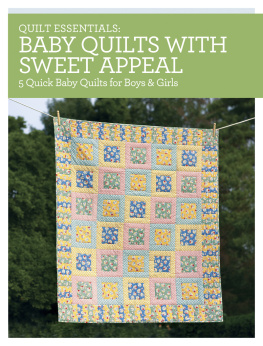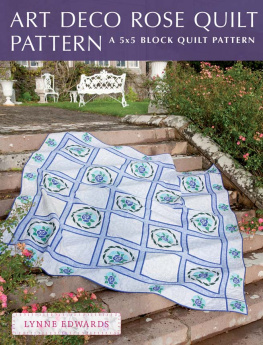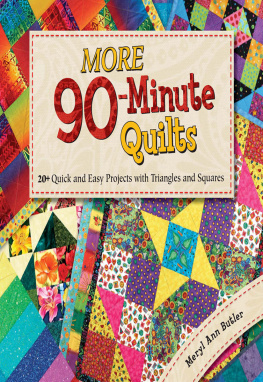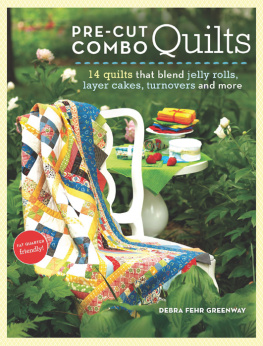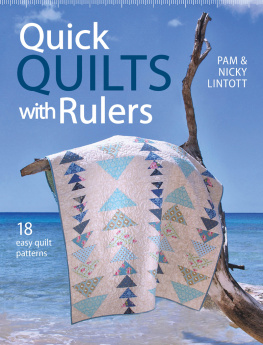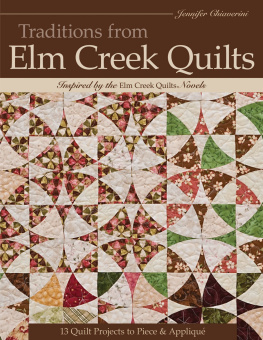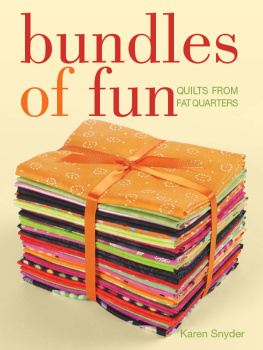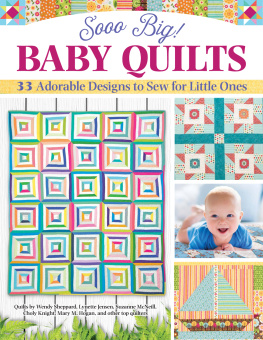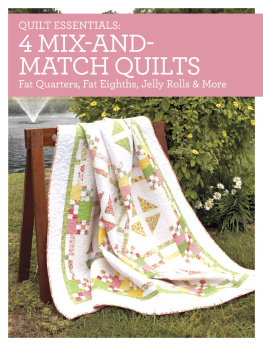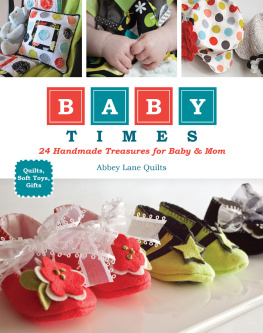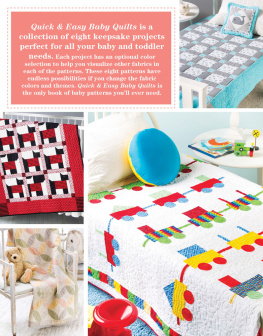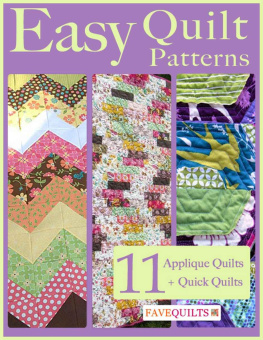Thank you for purchasing this Martha Pullen eBook.
Sign up for our newsletter and receive special offers, access to free content, and information on the latest new releases and must-have crafting resources! Plus, receive a coupon code to use on your first purchase from Store.MarthaPullen.com for signing up.
or visit us online to sign up at
http://marthapullen.com/ebook-promo
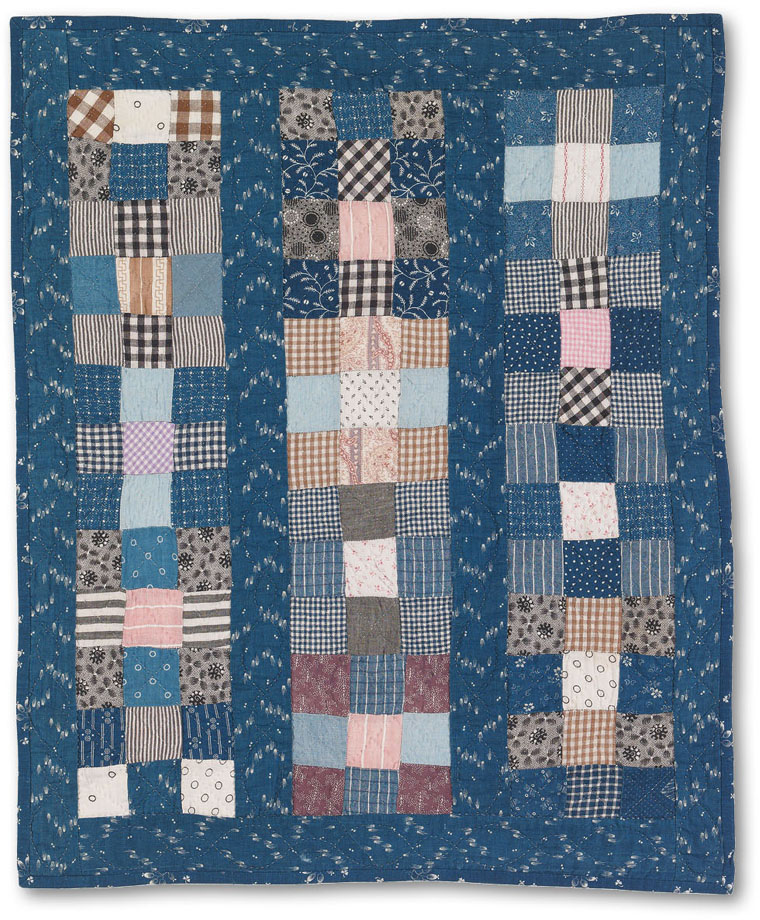
Contents
The Quilts
General Instructions
Choosing Fabric
Choosing fabric for a project can be the most enjoyable part of the whole process. Dont be afraid of this step! Start with one fabric you really like and pull the coordinating colors from it. Or, even easier, use one of those coordinated fat quarter bundles you have purchased. Those fabrics have been selected by experts in the quilt shop, or may be part or all of a fabric collection, in which case the fabrics are designed to work together!
You can choose the same fabrics for a small quilt that you would pick for a large quilt. The scale of the design does not have to be small. Choose a large design if it looks good cut into smaller pieces. Also choose a larger print for the border or large units in the quilt such as alternate blocks. If in doubt, make up one block before cutting the whole project.
Preparation
You may choose to pre-wash your fabrics or not. They lose some of their body when you wash them, and you may have some loss with raveling. A little spray starch or sizing can restore the body. If you are eager to start a new project, you can simply pretest for color bleeding by spritzing a small area of the fabric with water, placing a white fabric over it, then ironing. If you get color transfer, perhaps youd better pre-wash.
Ironing the folds out of the fabrics before cutting is a necessary step for accurate cutting.
Cutting
Accuracy is always important in the cutting process, but even more so with little quilts; there is less room for error. Also, the pieces will fit together more readily if youve taken the time to cut them accurately. Some tips for accurate cutting:
- Work in good light, daylight if possible.
- Iron the fabrics before cutting.
- Cut only two layers of fabric at a time. Any time you save in cutting more layers will be lost when the pieces dont fit accurately.
- Keep your tools from slipping; use the film or sandpaper that adheres to the backside of the tools.
- Use a sharp rotary cutter and a good mat. Mats do wear out after a time, as too many grooves get cut into them. Replace blades and mats as needed; this is not an area to cut corners (no pun intended!).
Sewing
Quarter-inch seams are so important! If at all possible, find a 14" (6mm) foot for your sewing machine. They are well worth the small investment.
If you have problems with mad feed dogs chewing up your fabric, try these tricks to tame them:
- Insert a new needle, preferably a smaller one.
- Clean your sewing machine, particularly the fuzz under the throat plate.
- Consider switching to a single-hole throat plate (instead of the wide opening for zigzag).
- Chain-sew whenever possible.
- Begin and end with a scrap of fabric, an engine and caboose.
Un-sewing
Its a fact of life, sometimes we make mistakes or the pieces dont fit properly. Fortunately, the seams on little quilts are short and the pieces small, so any un-sewing goes quickly. However, dont get hung up on perfection. Fix the areas that bother you (learn from your mistakes!) and move on to the next step.
Pressing
Remember the purpose of pressing is to make the seam/unit/block/quilt FLAT. Keep that thought in mind while pressing. I prefer to iron from the right side whenever possible. Pressing arrows are given in the diagrams. If you use these, most, if not all, of your seams will alternate.
TIPS:
Try this quick check to see if you are sewing an exact 14" (6mm) seam: Cut three 112" 312" (3.8cm 8.9cm) strips. Sew them together on the long edges. Press. The square should now measure 312" (8.9cm). If not, adjust your seam allowance. (Also, check that you have pressed correctly.)
Twisting the Seam
Try this neat trick whenever piecing any type of four-patch unit. It will make the center intersection lie flatter.
- Before pressing the last seam on a four-patch, grasp the seam with both hands about an inch (2.5cm) from the center seam. Twist in opposite directions, opening up a few threads in the seam.
- Press one seam one direction, the other seam the opposite direction. In the center you will see a tiny four-patch appear, and the center now lays flat.

Borders
We often make this more difficult than it needs to be. Simply cut the strips designated for the borders, place them on top of the quilt, measuring through the middle of the quilt. Measure for the borders with the fabric strips themselves. Always measure with two strips at a time so the borders are guaranteed to be the same length! I crease the border at the proper length, and cut a bit longer for insurance. Pin the borders to the quilt and sew.
Mitered Borders
Occasionally, to look best, borders need to be mitered. To cut mitered borders, add the width of two extra borders to the length. Also, add a couple of inches for insurance. For example: the quilt top measures 20" 30" (50.8cm 76.2cm) and you are adding 3" (7.6cm) wide borders. For the top and bottom of the quilt you would cut 20" + 3" + 3" + 2" (insurance) = 28" (50.8cm + 7.6cm + 7.6cm + 5.1cm = 71.1cm). For the sides, 30" + 3" + 3" + 2" = 38" (76.2cm + 7.6cm + 7.6cm + 5.1cm = 96.5cm).
- Find the center of each border and the center of the corresponding edge of the quilt. Pin together in the center. Sew the borders to the quilt, stopping and backstitching 14" (6mm) from the corner of the quilt.
- Fold the quilt on the diagonal, with right sides together, matching raw edges of the borders. The borders will extend outward.
- Place the Companion Angle (or a ruler) on your quilt with the longest edge on the diagonal of the quilt, and a 45-degree line (or the edge of the Companion Angle) aligned with the raw edges of the borders.
- Draw a diagonal line from the end of the stitching line to the raw edges of the border.
- Pin the borders together along this marked line. Sew on the line, backstitching at the inside corner.
- Check the seam on the right side. If it lies flat, without tucks or pleats, trim the seam to 14" (6mm). Press open or to one side. Repeat on all 4 corners.

Mitered borders
Batting Choices
The small quilts look (and hang) best with a lightweight flat batting. A good choice is a lightweight cotton, or Thermore by Hobbs Bonded Fibers (a lightweight polyester batting designed for garments).

